Part Analysis
| General Data | |
| Manufacturer (OEM) | CWT |
| PCB Type | Double-Sided |
| Primary Side | |
| Transient Filter | 6x Y caps, 3x X caps, 2x CM chokes, 1x MOV |
| Inrush Protection | 2x NTC Thermistor SCK-075 (7 Ohm) & Relay |
| Bridge Rectifier(s) |
2x Vishay LVB2560 (600V, 25A @ 105°C)
|
| APFC MOSFETs |
2x Infineon IPW60R099P6 (600V, 24A @ 100°C, Rds(on): 0.099Ohm)
|
| APFC Boost Diode |
2x Infineon IDH08G65C6 (650V, 8A @ 145°C)
|
| Driver IC(s) |
1x Texas Instruments UCC27324-Q1
|
| Bulk Cap(s) | |
| Main Switchers |
4x Alpha & Omega AOTF29S50 (500V, 18A @ 100°C, Rds(on): 0.15Ohm)
|
| Driver IC(s) | 2x Texas Instruments UCC27324-Q1 |
| Digital Controllers | 2x Texas Instruments UCD3138A & Sync Power SPN5001 (no load cosumption) |
| MCU | Microchip PIC32MM0064GPM036 |
| Topology |
Primary side: Digital, Interleaved PFC, Full-Bridge & LLC converter
Secondary side: Synchronous Rectification & DC-DC converters |
| Secondary Side | |
| +12V MOSFETs | 8x Vishay SiR626DP (60V, 100A @ 70°C, Rds(on): 1.7mOhm) |
| 5V & 3.3V | DC-DC Converters: 8x Ubiq QM3054M (30V, 57A @ 100°C, 5.5mΩ) PWM Controller: uPI-Semi uP3861P |
| Filtering Capacitors | Electrolytic: 4x Nichicon (4,000h @ 105°C, HD), 4x Rubycon (4-10,000h @ 105°C, YXF), 6x Rubycon (6-10,000h @ 105°C, ZLH), 2x Rubycon (4-10,000h @ 105°C, YXJ) Polymer: 8x Nippon Chemi-Con, 37x FPCAP |
| Supervisor IC | Weltrend WT7502R (OVP, UVP, SCP, PG) |
| Fan Controller | Microchip PIC32MM0064GPM036 |
| Fan Model | Corsair NR140P (140mm, 12V, 0.22A, Fluid Dynamic Bearing Fan) |
| 5VSB Circuit | |
| Rectifier | |
| Standby PWM Controller | On Bright OB5282CP |
CWT provides this platform with a contemporary design. Its primary side has an APFC, a full bridge, and an LLC resonant converter. On the secondary side, a synchronous rectification scheme is used for 12V, and a pair of DC-DC converters generate the minor rails. The PCB is large, providing enough room between parts for adequate airflow. The primary and especially the secondary heatsink are not large, but we typically find compact heatsinks in high-efficiency PSUs. There are also no heatsinks on the secondary side, since the 12V FETs are installed on a vertical board.
The transient filtering stage has all the necessary parts to block incoming and outgoing EMI emissions. Typically, it starts at the AC receptacle and continues on the main PCB.
There is a MOV to protect from voltage surges and two NTC thermistors, with a combined resistance of 14 ohms, which is high enough to handle this platform’s inrush currents. Moreover, a bypass relay supports the NTC thermistors.
The two Vishay LVB2560 parallel bridge rectifiers can handle up to 50A together, so they are more than enough to cover this platform’s needs.
The APFC converters use two Infineon FETs and two boost diodes of the same brand. The bulk caps are by Chemi-Con and offer a combined capacity of 1500uF. They are rated for 2,000 h at 105 °C.
A pair of digital controllers handles the APFC, the primary switching, and the 12V FETs. We would have a fully digital platform if digital controllers also dealt with the minor rails. The brain of the PSU is a Microchip PIC32MM0064GPM036 MCU, which also handles the communications between the system and the PSU’s respective circuits.
The four Alpha & Omega primary switching FETs are installed in a full-bridge topology, and an LLC resonant converter is used for higher efficiency.
Two parallel main transformers were used since there wasn’t room for a big one.
Eight Vishay SiR626DP FETs regulate the 12V rail. They are installed on a vertical board right next to the main transformers to minimize energy losses.
Two DC-DC converters generate the minor rails.
Nichicon and Rubycon provide the electrolytic filtering capacitors. FPCAP and Chemi-Con make the polymer caps.
You can find more information about capacitor performance and other specs below:
The supervisor controller is a Weltrend WT7502R. The unit’s MCU also handles many of the available protection features.
The standby PWM controller is On Bright OB5282CP.
Several polymer caps at the face of the modular panel form an extra ripple-filtering layer.
The soldering quality is good.
The cooling fan is a Corsair NR140P, using a fluid dynamic bearing. It is controlled through the unit’s MCU.
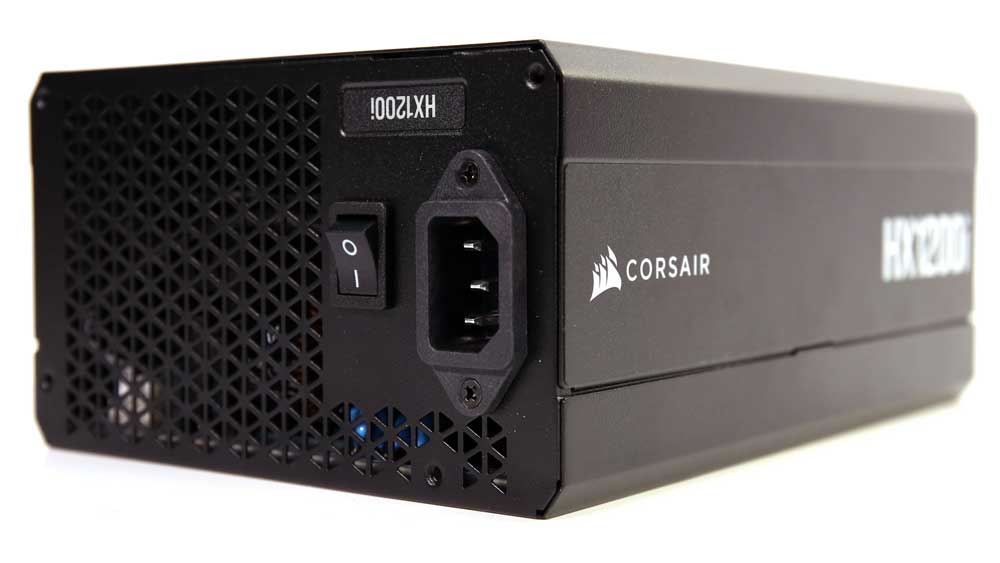
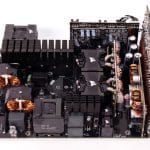
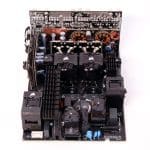
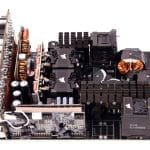

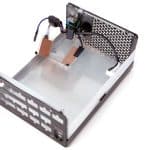
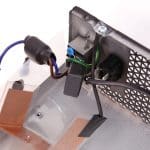

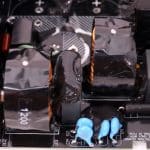
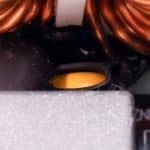
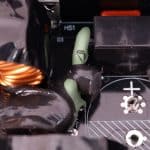
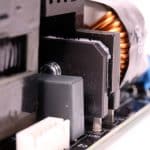
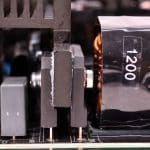
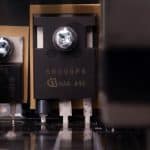
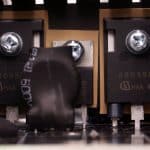
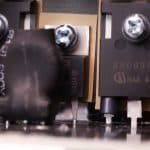
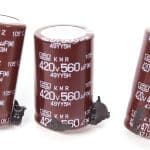

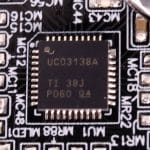
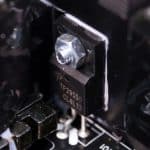
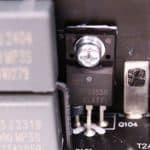
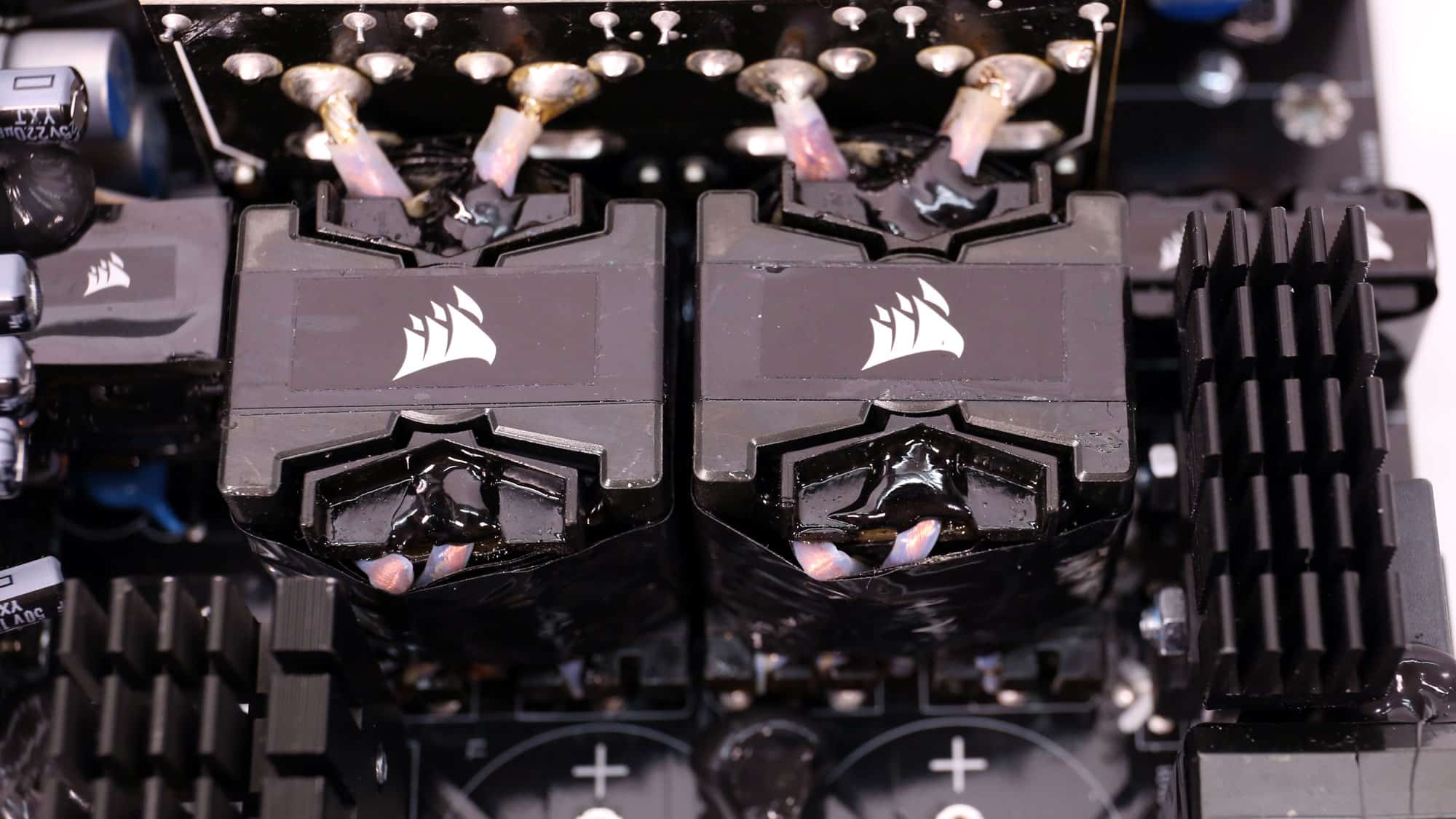
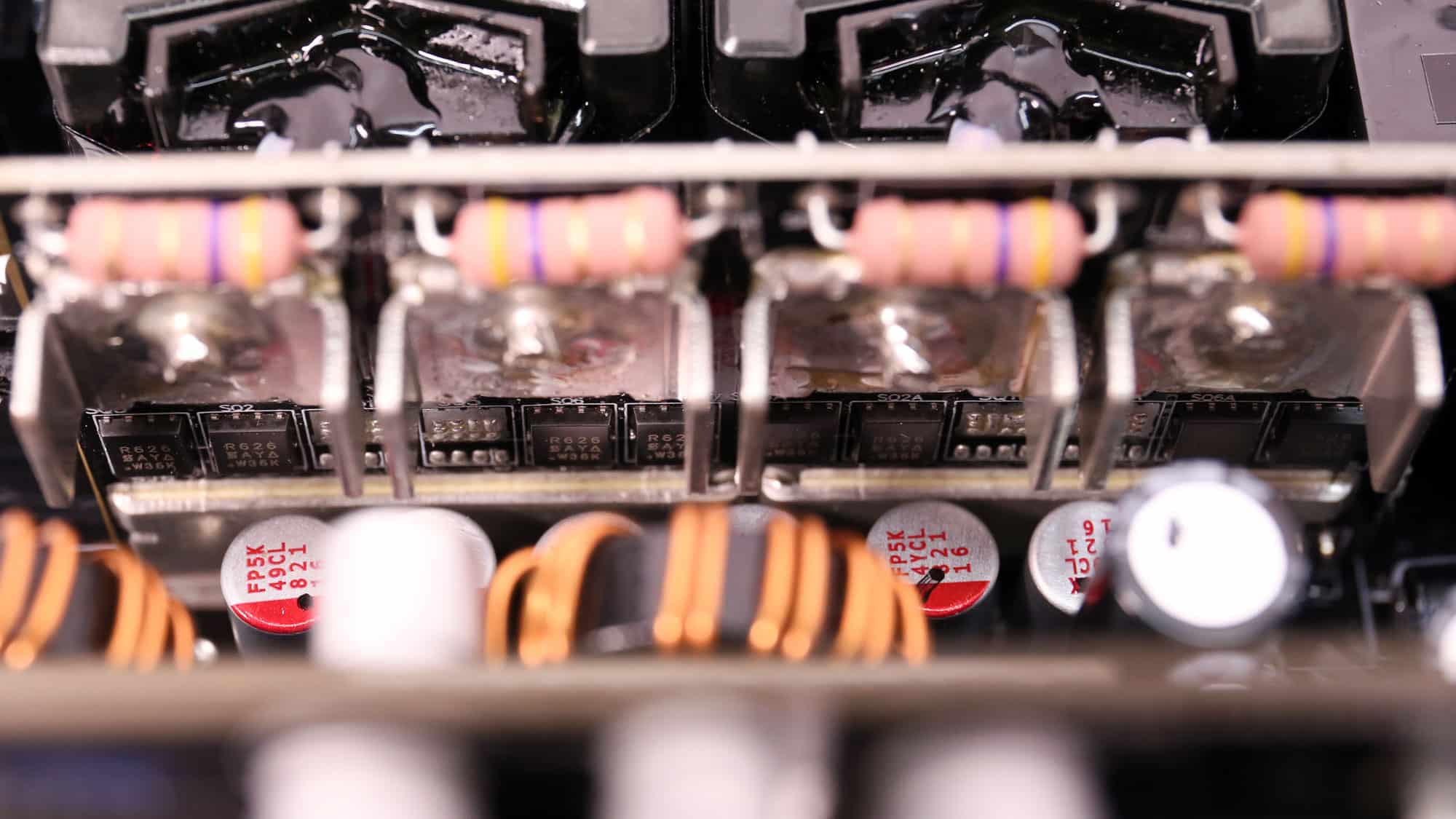
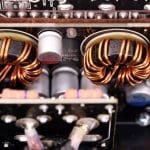
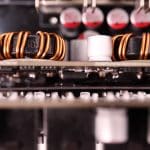
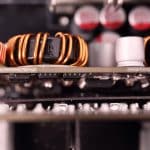
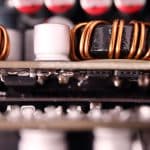
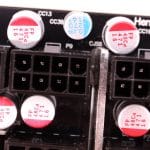
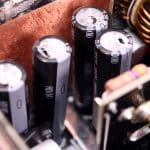


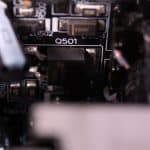
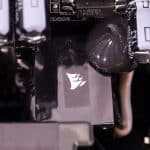
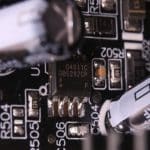
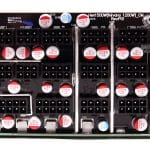
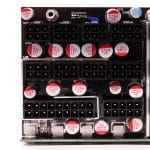
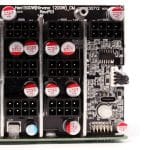
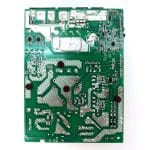
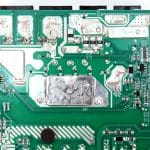
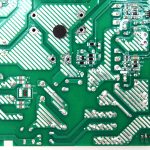

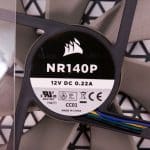
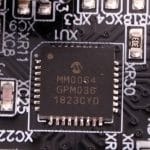
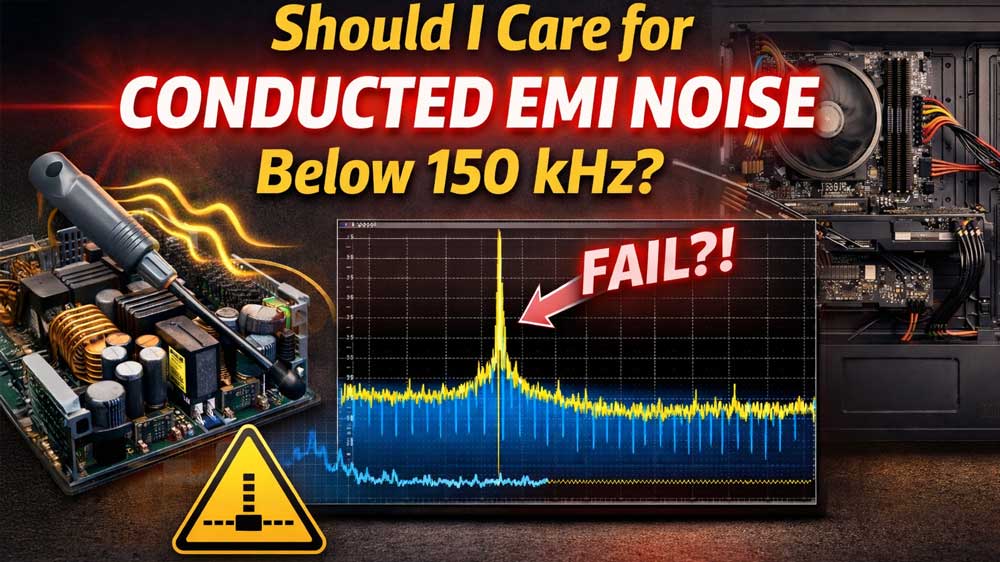
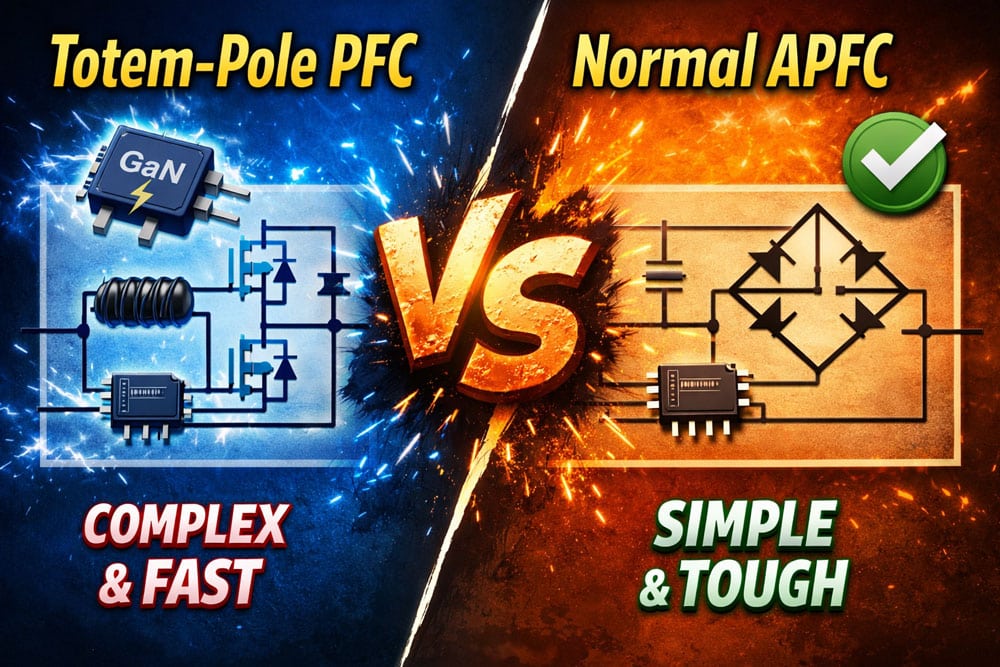
Hi,
Thanks for the in-depth review
For the Super Flower Leadex VII XP 1200W ATX v3.0 PSU Review, you categorized its ripple suppression as “exceptional at 12V and good enough on the other rails.”
Yet for this review, you mearly said “Ripple suppression is good”, though by the charts, it seems that ripple suppression on this PSU is better than the Super Flower.
Is the ripple suppression on this PSU better than the Super Flower or is there something that makes the Super Flower stand above the Corsair?
Thanks!
I didn’t quite understand your question. In any case, ripple suppression in the SF unit is very good, mainly because of the 12V rail’s performance, which matters the most.
“I want to start with this first. From now on, I won’t often do Corsair reviews since I don’t communicate with Corsair’s PR team.”
Can I ask what’s the story here? I wasn’t sure if there was any bad blood between you and Corsair. I can say it will be sad to see fewer corsair PSU reviews, because they’re a big player in the PSU space, and your reviews are always so thorough.
There is no bad blood; it’s just a matter of poor communication with the corresponding team.
Bonjour,
Franchement vous faites un formidable travail en profondeur dans de nombreux domaines informatique que vous maitrisez et que vous ne faites partager pour ne pas commettre d’erreur dans nos choix. Voilà j’ai opté pour une 5090 Astral OC pour mon nouvel ordinateur. Mais voilà ayant vu sur le salon Computex l’arrivé en début d’année prochaine, de la gamme Optiguard de Seasonic. Je souhaiterais avoir une alimentation de qualité mais sans me ruiner non plus car je compte bien m’acheter ce modèle Optiguard bien sûr quand il sera passer entre vos mains, pour voir si le jeu en vaut la chandelle. Donc j’avais jeter mon dévolu sur la Prime 1600W et Cybenetics m’a indiqué que même si elle n’est pas en ATX 3.1 le câble qui relie l’alimentation à la carte graphique fera le job. Qu’en est il dans les faits ? Dois je demander à Seasonic un nouveau câble ou bien utiliser celui qui sera j’imagine fourni avec l’Asus Astral OC 5090 ? Enfin, je me suis dit en moi même mais si j’opte pour une alimentation ATX 3.0 autant partir sur une AX1600i dans ce cas. Mais voilà je suis perdu, totale. Car si une alimentation moins cher et tout aussi véloce et performante avec une protection de ventillateur et qui ne fait pas griller ma carte graphique existe chez un autre constructeur je suis ouvert à cette proposition. Merci d’avance pour votre aide précieuse.
Hello, Frankly you do a wonderful job in depth in many areas of computing that you master and that you do not share to make mistakes in our choices. I opted for a 5090 Astral OC for my new computer. But then I saw at Computex that Seasonic’s Optiguard range would be arriving early next year. I’d like to have a quality power supply, but I don’t want to break the bank either, as I intend to buy this Optiguard model once it’s in your hands, to see if it’s worth the money. So I’d set my sights on the Prime 1600W, and Cybenetics told me that even if it’s not ATX 3.1, the cable linking the power supply to the graphics card will do the job. What’s the reality? Should I ask Seasonic for a new cable, or use the one I imagine will be supplied with the Asus Astral OC 5090? Well, I said to myself, if I opt for an ATX 3.0 power supply, I might as well go for an AX1600i. But now I’m totally lost. Because if a less expensive power supply with the same speed and performance, with fan protection that doesn’t fry my graphics card, exists from another manufacturer, I’m open to this proposal. Thank you in advance for your help.
Hi, thanks for your high quality reviews and your hard work! Just bought an Astral RTX 5090 OC and want to pair it with a high quality PSU. Had in the past mostly high quality ATX 2.0 Seasonic like the TX-1000, do you recommend the newer ones due to be released – like the TX-1300, or you have different recommendations for a silent, reliable PSU that can handle the GPU load?
The Seasonic TX line is very good, although expensive. If you can afford it, go for it.
Thank you very much for all the reviews, analyses and hard work.
I am in the market for a high-end PSU, and ended up eyeing this Corsair HX1200i (or HX1500i) and the cooler master X silent max 1300. Which one would you consider the most reliable?
Reliability also has to do with luck and the mains grid quality, since all PSUs you mention have high build quality and good parts. I would probably go for the HX1500i, because the CM unit is super expensive.
Thank you!